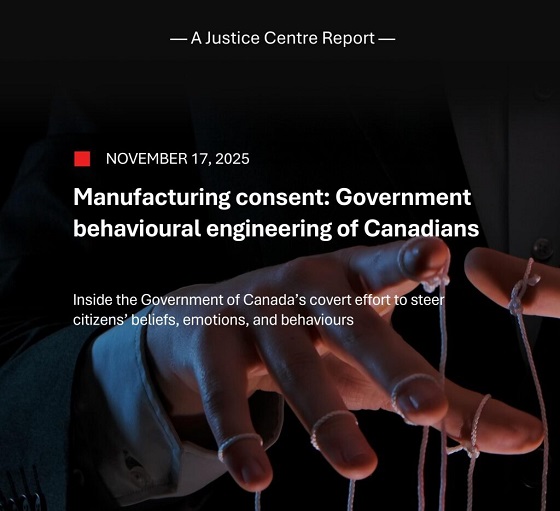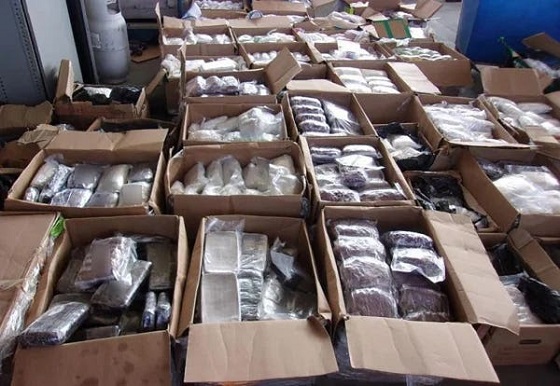Opinion
Blind to the Left: Canada’s Counter-Extremism Failure Leaves Neo-Marxist and Islamist Threats Unchecked

By Ian Bradbury
Incidents like the 2022 Coastal GasLink attack, the December 2023 Ottawa plot against Jewish events and the January 2024 Edmonton City Hall attack underscore the stakes, yet they fade from public discourse without rigorous analysis. This is not mere oversight—it is a systemic failure of Canada’s counter-radicalization and extremism frameworks and media, exposing the nation to risks from under-assessed threats.
In June 2025, a former British Columbia civil liberties leader—forced to resign in 2021 for rhetoric deemed too extreme even by the province’s NDP government—re-emerged to lead a protest outside the Canada Border Services Agency offices in Vancouver. Her earlier praise of Hamas attackers’ hang-glider tactics as “beautiful” and her call to “burn it all down” amid the 2021 church arsons across Canada raise a critical question: Is this the sign of a deeper ideological current gaining momentum beneath the surface?
Canada faces a mounting crisis of radicalization and extremism, yet its citizens remain largely uninformed or, worse, misinformed.
Despite tens of millions invested in counter-radicalization over the past decade, threats from extremist elements within the Pro-Palestinian movement, the “Hands Off Iran” protests, and left-wing extremism receive insufficient scrutiny.
The “Hands Off Iran” demonstrations on June 22, 2025, which rallied hundreds in support of the Iranian regime—planned before U.S. strikes on Iranian nuclear facilities and organized by many of the same protest groups active since October 7, 2023—highlight this neglect.
The absence of detailed reporting obscures their scope and significance. Incidents like the January 2024 Edmonton City Hall attack and the December 2023 Ottawa plot against Jewish events underscore the stakes, yet they fade from public discourse without rigorous analysis.
This is not mere oversight—it is a systemic failure of Canada’s counter-radicalization and extremism frameworks and media, exposing the nation to risks from under-assessed threats.
Under-assessed Threats in Plain Sight
Pro-Palestinian rallies in Vancouver, Toronto, Ottawa, and Montreal reveal this gap. Flags of Hamas and Hezbollah—designated terrorist groups in Canada—have been displayed openly, and chants of “Death to Canada”, “Death to America”, and “Death to Israel, Death to Jews” have been reported, yet government-funded organizations offer no in-depth analysis of the radical networks or rhetoric tied to these events.
The “Hands Off Iran” protests face the same silence. Where are the detailed reports dissecting these movements? Where are the network maps or guides to their flags, symbols, and rhetoric, as seen for far-right groups?
Similarly, Left-wing accelerationism, an neo-marxist ideology advocating violent societal collapse, has fueled incidents like the 2022 Coastal GasLink attack, the 2021 church arsons, and anti-colonial criminal acts, yet it is overshadowed and downplayed by coverage of far-right threats, such as militant “right-wing accelerationism”. Two cases illustrate the broad urgency: the Edmonton attack, involving gunfire and a Molotov cocktail, included a video supporting Palestine and condemning Israel’s actions in Gaza, but was downplayed as “salad-bar extremism.”
The Ottawa plot, inspired by Islamic extremism and the Israel-Palestine conflict, vanished from headlines with alarming speed. These incidents demand thorough investigation, not dismissal.
A Counter-Radicalization Industry Misaligned
Canada’s counter-radicalization efforts fail to address the full spectrum of threats. Organizations such as the Canadian Centre for the Prevention of Radicalization Leading to Violence and the Canadian Anti-Hate Network (an organization linked to the extremist decentralized Antifa movement) focus heavily on far-right extremism and limited Islamic threats (e.g., ISIS and Al-Qaeda), while sidelining left-wing extremism, accelerationism, anarchist extremism, and broader Islamic extremism.
Despite Canada’s 2024 designations of the IRGC and Samidoun as terrorist entities, these threats receive minimal attention compared to the detailed profiling of far-right networks in Canada. Detailed radicalization or extremist assessment reports on Edmonton or Ottawa? Virtually nonexistent. Further compounding the challenge, Canada’s reliance on foreign groups like the UK’s ICSR, ISD, Moonshot, or Meta’s GIFCT—partly funded by Canadian taxpayers—skews focus away from nuanced, Canada centered, counter-radicalization and extremism priorities.
Certain initiatives, such as Moonshot’s redirect program, which was found to have directed individuals vulnerable to right-wing radicalization to curated content from an anarchist and convicted human trafficker with ties to Russian organized crime, likely exacerbated rather than mitigated the risks it intended to reduce. This prompts a critical question: Why does Canada entrust so much of its counter-radicalization and extremism initiatives to external entities that are unaccountable to its citizens?
Media coverage only compounds the problem.
The Edmonton attack’s Palestine-linked video was buried under vague labeling, and the Ottawa plot faded without follow-up. Extremist symbols at rallies are treated as backdrop, unlike the 2022 convoy protests, which prompted detailed government-funded analyses of symbols, rhetoric, and networks, that were amplified by media.
Exacerbating the challenges, Public Safety Canada’s Listed Terrorist Entities page lists groups but lacks guides to their symbols, terms, or networks, leaving Canadians ill-equipped to identify threats. This is not journalism or governance—it is a failure to connect evident and observable dots.
CSIS and the RCMP have raised alarms about Iranian- and Palestinian-linked threats, in addition to Israeli Deputy Foreign Minister Sharren Haskel’s claim of hundreds of IRGC operatives active in Canada. The 2024 designations of the IRGC, linked to Hamas, Hezbollah, and the Houthis, and Samidoun, tied to Palestinian extremism, confirm these risks. CSIS has flagged Iranian-backed influence networks, and the RCMP thwarted plots like the Ottawa conspiracy.
Yet, these warnings rarely translate into robust public understanding, leaving Canadians vulnerable to acknowledged and observable threats.
A Path Forward: Immediate Accountability
The U.S. bombardment of Iranian nuclear sites has heightened these risks, with reports of Iranian sleeper cells in North America adding urgency. Canada must act swiftly to address all threats—left-wing, Islamic, and far-right—with equal rigor.
Detailed, unclassified reports on incidents like Edmonton and Ottawa, alongside network analyses of domestic protest and disruption movements, must become standard. Furthermore, Public Safety Canada should enhance its Listed Terrorist Entities page with guides to symbols, flags, rhetoric, and networks, drawing on allied nations’ open-source models for rapid implementation. Federal funding for counter-radicalization groups must mandate balanced, actionable reporting across all threats, verified through regular audits.
Canada’s skewed approach to extremism is a profound national security vulnerability. Left-wing extremism and accelerationism, pervasive Islamic extremism, and attacks on Jewish institutions fester unaddressed, while rallies including support for listed terrorist groups evade scrutiny.
The counter-radicalization sector, media, and government share responsibility for this dangerous oversight. As global tensions rise and domestic risks evolve, the cost of inaction grows steeper, leaving Canada vulnerable to the next strike. What message does Canada send by prioritizing some threats while overlooking others that are active and evident?
And what will the reckoning be when a skilled attacker, emboldened by this neglect, slips through the cracks?
The Bureau is a reader-supported publication.
To receive new posts and support my work, consider becoming a free or paid subscriber.
Invite your friends and earn rewards
armed forces
Canada At Risk Of Losing Control Of Its Northern Territories

From the Frontier Centre for Public Policy
By Gerry Bowler
Canada has left the North wide open to foreign powers eager to grow their Arctic foothold
Canada is in danger of losing the Arctic because Ottawa has ignored the North for far too long.
The Canadian North makes up 40 per cent of our land mass and includes more than 19,000 islands in the Arctic Archipelago. Yet only about 120,000 people live across this enormous stretch of wilderness. Canada took control of the region in the late 19th century through territorial transfers from the Hudson’s Bay Company and the British Crown, one of the largest land transfers in history.
For decades afterward, the North received little federal attention. The Second World War briefly changed that, prompting construction of the Alcan Highway to Alaska and bringing new airfields and telephone lines.
The Cold War, along with the threat of Soviet bombers crossing the Pole, led to multiple radar lines. Still, Prime Minister St-Laurent admitted in the 1950s that Canadian governments had treated the North “in an almost continuing state of absence of mind.”
John Diefenbaker’s Progressive Conservative administration tried to reverse that neglect. In 1958, he told a Winnipeg audience: “I see a new Canada—a Canada of the North! … We intend to carry out the legislative program of Arctic research, to develop Arctic routes, to develop those vast hidden resources the last few years have revealed.”
Plans for a research and industrial city in Frobisher Bay, new roads and railway lines and wide-ranging surveys were ambitious but ultimately unaffordable. In the years that followed, both Liberal and Conservative governments again set northern development aside.
Foreign interest, however, continued to grow. The Canadian Security Intelligence Service recently reported Russian and Chinese attempts at influence and subversion in our northern territories.
American governments over the past 20 years have shown serious interest in the region’s resources, which include significant oil, gas and mineral deposits, along with control of the Northwest Passage, a shipping route becoming increasingly accessible as Arctic sea ice recedes.
Canada considers those waters national; the United States, the European Union and at times China argue it is an international strait.
For all practical purposes, Canada has what amounts to no meaningful presence north of the tree line, leaving the field open to countries with far more ambition and far better-equipped forces.
Canada is in no position to defend its claims. We have no icebreakers capable of operating through the Arctic winter. We have no submarines that can work under the ice cap. We have no permanent air base for fighter jets.
And to cover two million square kilometres of Arctic territory, we have only 300 troops stationed there. The chance they could detect, let alone repel, a serious intruder is essentially zero. Without these capabilities, Canada cannot properly monitor activity in the region or enforce its sovereignty claims.
In the last federal budget, Ottawa announced a $1-billion Arctic infrastructure fund for new airports, seaports and all-season roads. Our foreign affairs minister has urged NATO to pay more attention to the Arctic, saying it “must be an organization not only that focuses on the eastern flank, but also that looks north.”
These steps are gestures, not strategy. Canadian governments excel at promises but struggle with procurement, and the idea that European allies might fill the gap, considering their weak response to Russia’s assault on Ukraine, is unlikely.
Our northern territory is under threat. We must use it or lose it.
Gerry Bowler is a Canadian historian and a senior fellow of the Frontier Centre for Public Policy.
Business
Large-scale energy investments remain a pipe dream

I view the recent announcements by the Government of Canada as window dressing, and not addressing the fundamental issue which is that projects are drowning in bureaucratic red tape and regulatory overburden. We don’t need them picking winners and losers, a fool’s errand in my opinion, but rather make it easier to do business within Canada and stop the hemorrhaging of Foreign Direct Investment from this country.
Thanks for reading William’s Substack!
Subscribe for free to receive new posts and support my work.
Changes are afoot—reportedly, carve-outs and tweaks to federal regulations that would help attract investment in a new oil pipeline from Alberta. But any private proponent to come out of this deal will presumably be handpicked to advance through the narrow Bill C-5 window, aided by one-off fixes and exemptions.
That approach can only move us so far. It doesn’t address the underlying problem.
Anyone in the investment world will tell you a patchwork of adjustments is nowhere near enough to unlock the large-scale energy investment this country needs. And from that investor’s perspective, the horizon stretches far beyond a single political cycle. Even if this government promises clarity today in the much-anticipated memorandum of understanding (MOU), who knows whether it will be around by the time any major proposal actually moves forward.
With all of the talk of “nation-building” projects, I have often been asked what my thoughts are about what we must see from the federal government.
The energy sector is the file the feds have to get right. It is by far the largest component of Canadian exports, with oil accounting for $147 billion in 2024 (20 percent of all exports), and energy as a whole accounting for $227 billion of exports (30 percent of all exports).
Furthermore, we are home to some of the largest resource reserves in the world, including oil (third-largest in proven reserves) and natural gas (ninth-largest). Canada needs to wholeheartedly embrace that. Natural resource exceptionalism is exactly what Canada is, and we should be proud of it.
One of the most important factors that drives investment is commodity prices. But that is set by market forces.
Beyond that, I have always said that the two most important things one considers before looking at a project are the rule of law and regulatory certainty.
The Liberal government has been obtuse when it comes to whether it will continue the West Coast tanker ban (Bill C-48) or lift it to make way for a pipeline. But nobody will propose a pipeline without the regulatory and legal certainty that they will not be seriously hindered should they propose to build one.
Meanwhile, the proposed emissions cap is something that sets an incredibly negative tone, a sentiment that is the most influential factor in ensuring funds flow. Finally, the Impact Assessment Act, often referred to as the “no more pipelines bill” (Bill C-69), has started to blur the lines between provincial and federal authority.
All three are supposedly on the table for tweaks or carve-outs. But that may not be enough.
It is interesting that Norway—a country that built its wealth on oil and natural gas—has adopted the mantra that as long as oil is a part of the global economy, it will be the last producer standing. It does so while marrying conventional energy with lower-carbon standards. We should be more like Norway.
Rather than constantly speaking down to the sector, the Canadian government should embrace the wealth that this represents and adopt a similar narrative.
The sector isn’t looking for handouts. Rather, it is looking for certainty, and a government proud of the work that they do and is willing to say so to Canada and the rest of the world. Foreign direct investment outflows have been a huge issue for Canada, and one of the bigger drags on our economy.
Almost all of the major project announcements Prime Minister Mark Carney has made to date have been about existing projects, often decades in the making, which are not really “additive” to the economy and are reflective of the regulatory overburden that industry faces en masse.
I have always said governments are about setting the rules of the game, while it is up to businesses to decide whether they wish to participate or to pick up the ball and look elsewhere.
Capital is mobile and will pursue the best risk-adjusted returns it can find. But the flow of capital from our country proves that Canada is viewed as just too risky for investors.
The government’s job is not to try to pick winners and losers. History has shown that governments are horrible at that. Rather, it should create a risk-appropriate environment with stable and capital-attractive rules in place, and then get out of the way and see where the chips fall.
Link to The Hub article: Large-scale energy investments remain a pipe dream
Formerly the head of institutional equity research at FirstEnergy Capital Corp and ATB Capital Markets. I have been involved in the energy sector in either the sell side or corporately for over 25 years
Thanks for reading William’s Substack!
Subscribe for free to receive new posts and support my work.
-

 COVID-1918 hours ago
COVID-1918 hours agoNew report warns Ottawa’s ‘nudge’ unit erodes democracy and public trust
-

 Great Reset2 days ago
Great Reset2 days agoEXCLUSIVE: A Provincial RCMP Veterans’ Association IS TARGETING VETERANS with Euthanasia
-

 Crime2 days ago
Crime2 days agoHow Global Organized Crime Took Root In Canada
-

 Energy2 days ago
Energy2 days agoExpanding Canadian energy production could help lower global emissions
-

 Business1 day ago
Business1 day agoThe numbers Canada uses to set policy don’t add up
-

 Business1 day ago
Business1 day agoNew airline compensation rules could threaten regional travel and push up ticket prices
-

 Alberta23 hours ago
Alberta23 hours agoAlberta bill would protect freedom of expression for doctors, nurses, other professionals
-

 COVID-1923 hours ago
COVID-1923 hours agoFreedom Convoy protestor Evan Blackman convicted at retrial even after original trial judge deemed him a “peacemaker”









